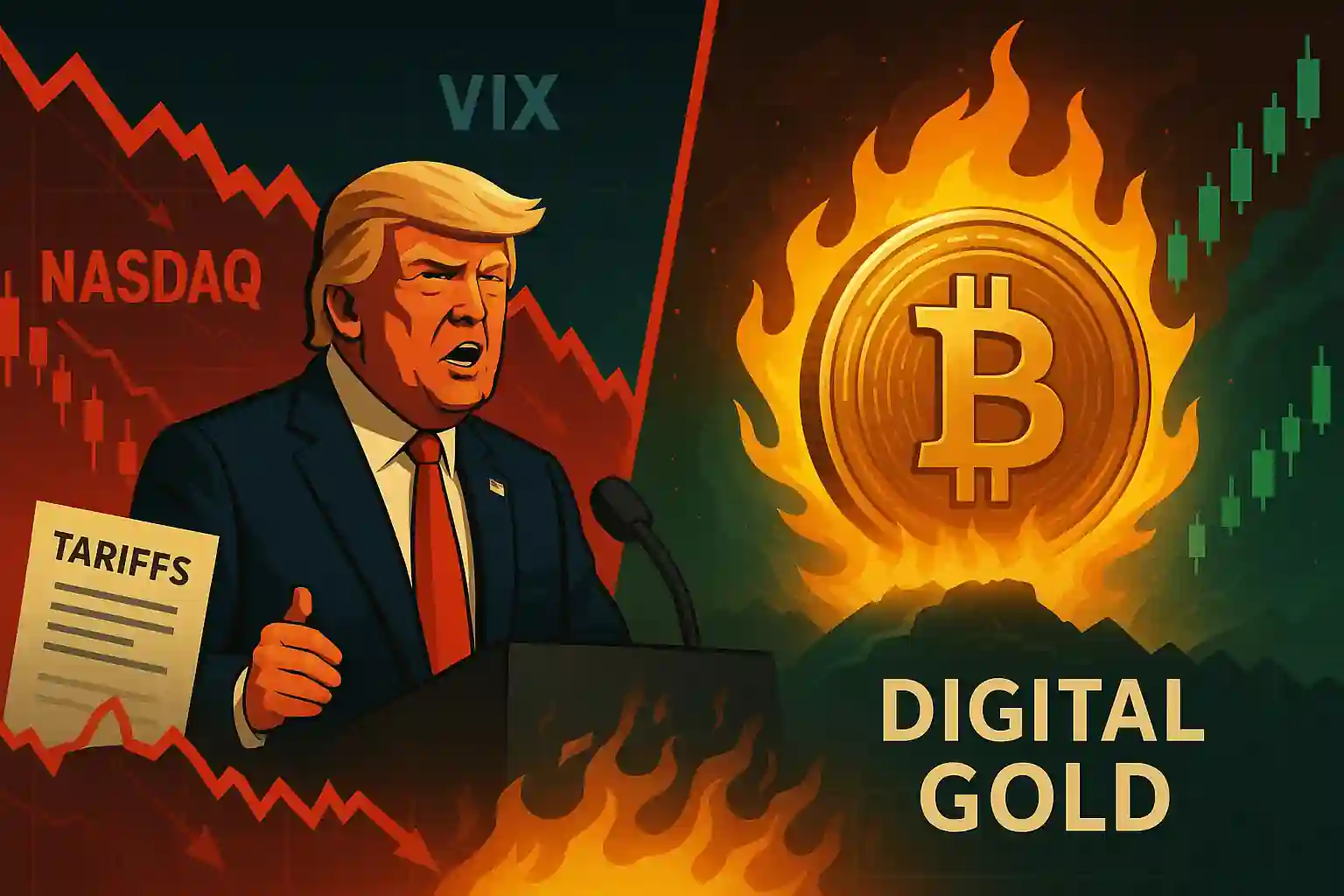Trump tariffs reignite market volatility concerns
President Trump’s April 2 announcement of new tariffs sent shockwaves through global markets. Stocks plunged, with the Nasdaq 100 dropping 4.8% and the S&P 500 losing 5.4% the next day.
Bitcoin also initially fell, but then rebounded quickly. The short-term fallout triggered a spike in the VIX Volatility Index, echoing fears from the early COVID period.
Trump’s trade move dominated headlines and shook investor sentiment, prompting renewed attention to safe-haven assets like Bitcoin.
Bitcoin’s resilience surprises in post-Trump volatility
Bitcoin’s rapid recovery after Trump’s tariffs contrasted sharply with the broader market. Its correlation with major indices fell below 0.50 just days after the announcement.
When Trump paused the tariffs on April 9, risk appetite returned, and correlations rose again. But Bitcoin had already displayed an independent behavior pattern.
This decoupling is important. It reinforces how Bitcoin reacts differently to Trump-induced shocks compared to traditional markets.
Trump impact highlights Bitcoin’s antifragile nature
Looking beyond short-term moves, Bitcoin’s performance following global crises — including those under Trump — reveals a growing role as a defensive asset.
During COVID, the Ukraine war, and the 2023 U.S. banking crisis, Bitcoin recovered faster than the S&P 500. Each time, its resilience increased investor confidence.
Trump’s decisions have often acted as catalysts for Bitcoin to demonstrate antifragile traits. These are now influencing institutional strategies worldwide.
Trump era fuels Bitcoin’s digital gold narrative
Bitcoin’s appeal as “digital gold” is growing. Trump-era volatility, monetary unpredictability, and trade uncertainty have made its fixed supply attractive.
Its independence from central bank control, high liquidity, and easy access position it as a unique hedge. These are benefits Trump-era policies continue to amplify.
While not fully recognized as gold’s successor, Bitcoin is increasingly viewed that way in times of Trump-triggered market stress.
Portfolio data affirms Bitcoin’s diversification power
Even a small Bitcoin allocation in a 60/40 portfolio improved risk-adjusted returns in 98% of rolling three-year periods over the past decade.
These gains are not just short-term. Under Trump-influenced volatility, Bitcoin’s positive-return volatility often outpaces its drawdowns.
This strengthens the argument for long-term inclusion in diversified portfolios, especially amid Trump-induced macro shifts.
Trump policies fuel institutional crypto interest
Institutional investors are adapting. The old view of Bitcoin as a “risk-on” asset is fading. Trump’s policies have helped reshape that view.
Asset managers now see Bitcoin as a long-term store of value, resilient during Trump-driven uncertainty and global disruption.
Trump’s ongoing influence in geopolitics and trade makes Bitcoin’s role in protecting wealth more relevant than ever.




